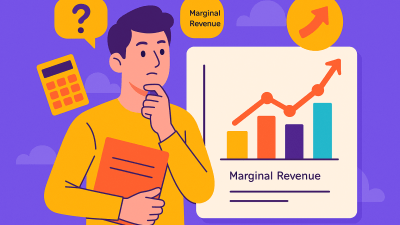Investing in the stock market can be a daunting task, especially when it comes to choosing which stocks to buy. Fortunately, there are numerous free tools available that can assist both novice and experienced investors in their decision-making process. Learn about Free Tools to Select Stocks for investments. This article will explore some of the most useful free resources that can help you identify potential stocks for your investment portfolio.
Free Tools to Select Stocks:
Yahoo Finance
Yahoo Finance is one of the most comprehensive and user-friendly financial websites available. It offers a wide range of features that can aid in stock research:
- Real-time stock quotes
- Financial news and analysis
- Company financials and key statistics
- Interactive charts
- Stock screener tool
The stock screener is particularly useful, allowing you to filter stocks based on various criteria such as market cap, sector, dividend yield, and more.
Google Finance
While not as feature-rich as Yahoo Finance, Google Finance provides a clean, straightforward interface for basic stock research. It offers:
- Real-time stock quotes
- Basic charts
- News related to specific stocks
- Portfolio tracking
Finviz
Finviz (short for Financial Visualizations) is a powerful stock screener and research tool. Its free version offers:
- An advanced stock screener with numerous filters
- Heat maps showing market performance by sector
- Insider trading information
- Technical analysis charts
The heat maps are particularly useful for quickly understanding which sectors or industries are performing well or poorly.
MarketWatch
MarketWatch provides a wealth of financial news and data. Some of its useful features include:
- Stock quotes and charts
- Financial news and analysis
- Earnings reports and calendars
- Economic calendars
Morningstar
Morningstar is known for its in-depth research and analysis. While much of its content is behind a paywall, the free version still offers valuable information:
- Basic stock quotes and charts
- Some analyst reports
- Fund comparisons
- Portfolio analysis tools
Seeking Alpha
Seeking Alpha is a platform that combines financial news with crowd-sourced content from investors and analysts. Its free features include:
- Stock analysis articles from contributors
- Earnings call transcripts
- Stock ideas and watchlists
- Basic charts and quotes
TradingView
TradingView is primarily known for its advanced charting capabilities, but it also offers:
- Real-time data and alerts
- Social networking features for traders
- Stock screener
- Economic calendars
Its charts are highly customizable and include a wide range of technical indicators.
Nasdaq.com
While associated with the Nasdaq stock exchange, this website provides information on stocks from all exchanges. It offers:
- Stock quotes and charts
- Market news
- Analyst research
- Earnings calendars
- Basic stock screening tools
SEC EDGAR
The U.S. Securities and Exchange Commission’s EDGAR (Electronic Data Gathering, Analysis, and Retrieval) system is a valuable resource for in-depth research. It provides access to:
- Company filings (annual reports, quarterly reports, etc.)
- Insider trading information
- Registration statements
While not the most user-friendly tool, it’s an excellent source for official company information.
Stockcharts.com
Stockcharts.com is another excellent resource for technical analysis. Its free version includes:
- Interactive charts with various technical indicators
- Educational resources on technical analysis
- Some predefined stock screens
Zacks
Zacks Investment Research offers a mix of free and paid content. The free features include:
- Earnings estimate revisions and surprises
- Zacks Rank for stocks (limited access)
- Stock screening tool
- Investment education articles
Investing.com
Investing.com provides a wide range of financial data across various markets. For stocks, it offers:
- Real-time quotes
- Technical and fundamental analysis tools
- Economic calendars
- News and analysis
Using These Tools Effectively
While these tools can provide valuable information, it’s important to use them effectively:
- Cross-reference: Don’t rely on a single source. Use multiple tools to verify information and get a well-rounded view.
- Understand the metrics: Make sure you understand what various financial metrics mean before using them to make decisions.
- Stay updated: The stock market is dynamic. Regularly check these tools for the latest information.
- Use as a starting point: These tools should be the beginning of your research, not the end. Use them to identify potential stocks, then dig deeper into the companies’ fundamentals, competitive position, and growth prospects.
- Consider your strategy: Different tools may be more useful depending on your investment strategy. For example, technical traders might focus more on charting tools, while value investors might prioritize fundamental analysis.
- Be aware of limitations: Free versions often have limitations compared to paid versions. Understand what you’re getting and what you might be missing.
- Combine with other research: These tools are most effective when combined with other research methods, such as reading company annual reports, following industry trends, and staying informed about broader economic conditions.
Remember, while these tools can provide valuable insights, they should not be the sole basis for your investment decisions. It’s crucial to develop a solid understanding of investment principles, create a well-thought-out investment strategy, and potentially consult with a financial advisor.
Moreover, always be mindful that past performance doesn’t guarantee future results, and all investments carry risk. These tools can help you make more informed decisions, but they can’t predict the future or eliminate the inherent risks of stock market investing.



